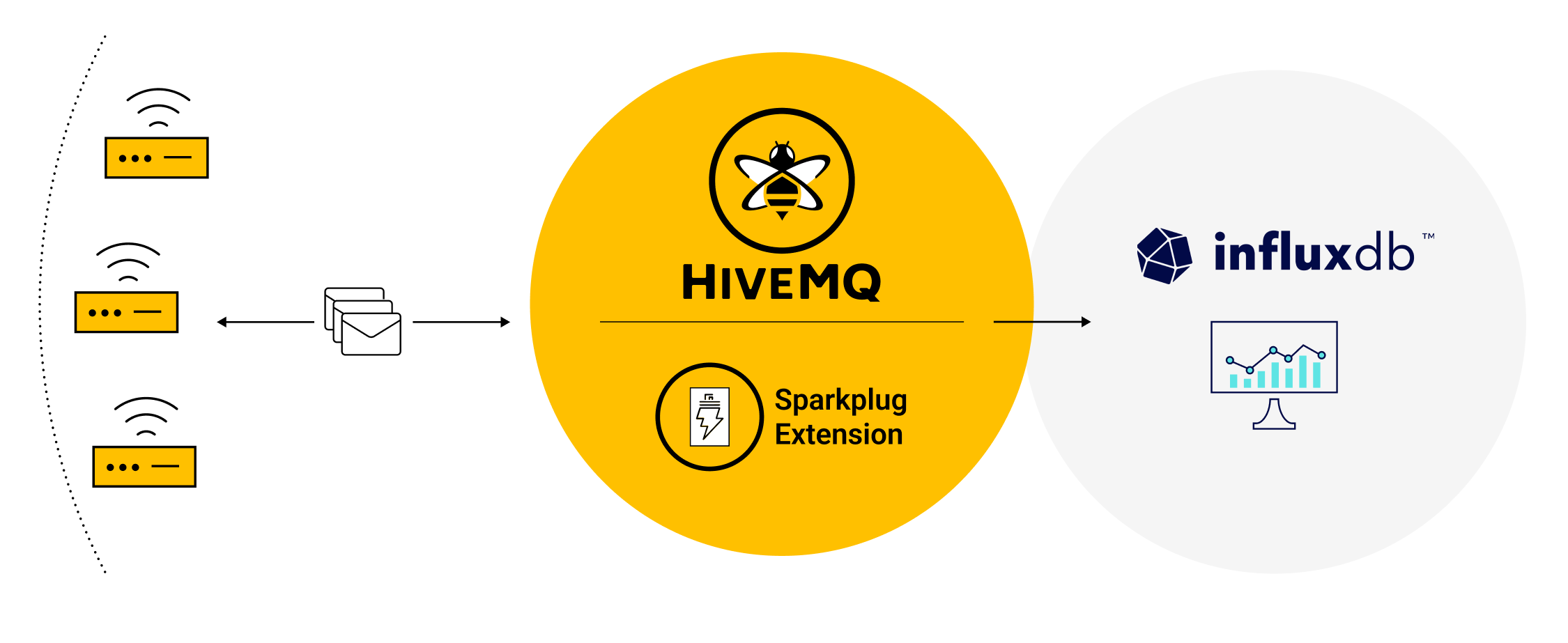
HiveMQ
HiveMQ helps companies connect devices to the Internet. HiveMQ MQTT platform makes it possible to move data from device to cloud in a secure, reliable and scalable manner. Over 130 customers, including many Fortune 500 companies, rely on HiveMQ in production for mission critical use cases like connected cars, transportation, logistics, Industry 4.0 and connected IoT products.
HiveMQ and InfluxData
HiveMQ helps users streamline the collection of IIoT data, while reducing complexity and increasing interoperability using MQTT and the Sparkplug MQTT broker. To help customers monitor their Sparkplug implementation, HiveMQ has developed an extension to pull Sparkplug metrics into InfluxDB for analysis and visualization.
How to use InfluxDB with HiveMQ
The HiveMQ Sparkplug Extension can be leveraged to gather sparkplug metrics from HiveMQ and persist them into a InfluxDB database. This database can be used as the data source for a monitoring dashboard to monitor directly the data from the devices and gateways of a Sparkplug Infrastructure.
Steps:
- Unzip the downloaded zip file
- In the folder
hivemq-sparkplug-extension, modify thesparkplug.propertiesfile to fit your needs. Check that the mandatory properties for influx db (host, port) are set - Copy the folder
hivemq-sparkplug-extensionto your[HIVEMQ_HOME]/extensionsfolder - Done

Key resources
- Webinar: How to Use InfluxDB to Visualize and Monitor MQTT Messages in an IIoT System
- Blog Post: Making it easy to create dashboards for MQTT Sparkplug with InfluxDB and HiveMQ
- Integration: https://github.com/hivemq/hivemq-sparkplug-influxdb-extension#installation
- Video: Introduction to MQTT Sparkplug: Plug 'n Play Interoperability for IIoT
- Video: Monitoring Plant Floor Data Using HiveMQ Cloud, InfluxDB, Grafana, & Schneider IIoT Gateway
- Video: IIoT Monitoring with MQTT Sparkplug & HiveMQ
VIDEO
Getting Started: Edge-to-Cloud Architecture with MQTT and InfluxDB 3.0
Discover how to use MQTT and InfluxDB to build your own modern industrial IoT architecture. In this webinar, we demonstrate how to use HiveMQ Edge — an open source MQTT gateway for IIoT with InfluxDB. You’ll learn how to connect HiveMQ Edge to an OPC-UA data source and push the data to HiveMQ Cloud, and how to use InfluxDB for data persistence and analysis.What's next?
Questions? Get Answers

